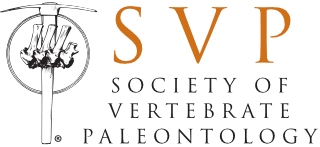Dr. Alfred Sherwood Romer (1894 – 1973) was the leading contributor to the discipline of vertebrate paleontology throughout much of the 20th century. He was founder and first president of the Society of Vertebrate Paleontology. His textbook Vertebrate Paleontology, published in three editions from 1933 to 1966, set the standards of excellence for anatomical investigation, systematic analysis and evolutionary understanding that continue to form the basis for our discipline.
He was a superb educator at all levels: public presentations, classroom lectures, and supervisor of more than 25 graduate students. These professional descendants, now extending into the 4th or 5th generation, are a living legacy of his contributions and aspirations. He integrated and promoted the study of vertebrate paleontology to a degree that may never be equaled, as well as being a model for professional colleagues and friends. His enthusiasm for the discipline and life in general was always evident and contagious, always with a human touch and a great sense of humor.
Romer’s major contributions were in the areas of the ancestry of vertebrates, Paleozoic tetrapods, and the antecedents of mammals. But equally important was his capacity to unite the entire discipline with his concepts, text books, and general understanding. His publications spanned more than 50 years, from his epochal “The locomotor apparatus of primitive and mammal-like reptiles” in 1922, to the completion of 20 successive papers, collectively titled “The Chanares (Argentina) Triassic reptile Fauna,” in 1973. His books included The Vertebrate Body, (in six editions), Osteology of the Reptiles, and major reviews of labyrinthodonts and pelycosaurs. All of these works were based on his own research, from lab dissections to field collection of fossils ranging from ancestral sharks through a wide spectrum of archaic amphibians and the earliest fossils leading to modern reptiles and mammals. Romer, or “Al” as he preferred when working in the field, spent a month or more each summer from 1926 into his post-retirement years with his wife and a succession of graduate student collecting in the Lower Permian of Texas, separated only by major excursions to the South African Karoo Basin, the maritime provinces of Canada, and the Triassic of South America. In all his activities, Romer provided the highest standards that we can hope to follow in the profession of vertebrate paleontology.
